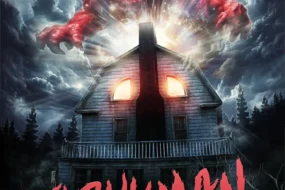
Editorials featured in the Forum section represent the personal opinions of their respective authors.
On Friday, October 13, 2023, my father and I indulged in an eight-hour movie marathon at Row House Cinema in Lawrenceville. The event was part of a 13-hour tribute to Friday the 13th, perfectly timed with the Halloween season. While I initially aimed to stay for the entire 13 hours, work and school commitments reluctantly took precedence over our shared love for horror movies. When we arrived, the theater was already packed with dedicated patrons who had been there since the marathon’s 10 a.m. kickoff.
This marathon was just one installment of Row House Cinema’s “Cult-o-Rama” program, where the theater hosts monthly double features of B-movies and cult classics. You might wonder, what exactly is a B-movie? Why would people willingly spend hours in a dark room watching them? In this article, I aim to answer these questions and advocate for the charm of the B-movie.
Contrary to popular misconception, B-movies are not about bees, nor are they related to the DreamWorks animated film. Merriam-Webster defines a B-movie as “a cheaply produced motion picture.”
To refine this definition further, culturally, B-movies typically refer to independently produced films lacking in professional production values, often featuring exaggerated gore, overt sexuality, delightfully cheesy special effects, and anchored in genres like horror, science fiction, or action. Cult movies are those B-movies that have amassed a dedicated, niche fanbase, much like the fellow marathon attendees at Row House Cinema.
For the purposes of this article, I will use the terms B-movie and cult movie interchangeably. Some well-known B-movies that capture the essence of the genre include “Sharknado,” “Evil Dead II,” “The Room,” “Pink Flamingos,” and “The Rocky Horror Picture Show.” Personally, my favorite film of all time is “Braindead” (also known as “Dead Alive”), a B-movie directed by Peter Jackson of “The Lord of the Rings” fame.
What’s the allure of these movies?
Firstly, I appreciate the glimpse into the filmmaking process. Major Hollywood productions often obscure these details, but with B-movies, you can see the seams. As someone involved in film production, I find joy in spotting the slight mismatches in prosthetics or the stop-motion-like movements of creatures. These imperfections inspire me, reinforcing that filmmaking is an art accessible beyond the realm of the affluent and well-connected.
B-movies’ low production costs provide a launchpad for many aspiring filmmakers. Sam Raimi started with “Evil Dead” at just 22 years old before going on to direct the original “Spider-Man” trilogy. Weta Studios began their special effects journey with Peter Jackson’s “Braindead,” subsequently working on projects like “The Witcher,” “Stranger Things,” and “Ghostbusters.” Even Pittsburgh’s George Romero kickstarted his career with a low-budget horror flick, now revered as the pioneer of the zombie movie genre.
Moreover, genres like horror offer filmmakers a canvas to experiment and refine their craft. Bold lighting, unconventional camera angles, and audacious effects are not just tolerated but celebrated in this genre.
Since B-movies are typically independent productions, they often provide a refreshing deviation from mainstream Hollywood blockbusters. Without studio oversight, these films retain authenticity and eccentricity, staying true to their creators’ original visions. While some may deem them “unmarketable” due to their unique style and content, I find these aspects to be the most exhilarating.
Consider the variety of dialogue styles in B-movies: stilted English with endearing bad acting, musical numbers about transsexual aliens from Transylvania, or provocative declarations advocating societal taboos. What they don’t feature are cliches like “He’s right behind me, isn’t he?”
You might ask, aren’t these movies just cheap, strange, and poorly made? Here’s my answer: passion and earnestness!
Unlike many bad movies churned out for profit, cult movies brim with passion. They lack the ironic, self-deprecating tone found in modern media. Instead, they’re crafted by individuals passionate about film, blood and guts, aliens, or murderous drag queens—individuals who dare to transform their ideas into tangible, finished works.
In today’s era of social media-driven uncertainty in artistry, where works often shout, “I may not be the best, but at least I know it,” B-movies defy this trend. Their creators revel in their passion and enjoyment of their craft, unburdened by the need for ironic detachment or approval-seeking.






